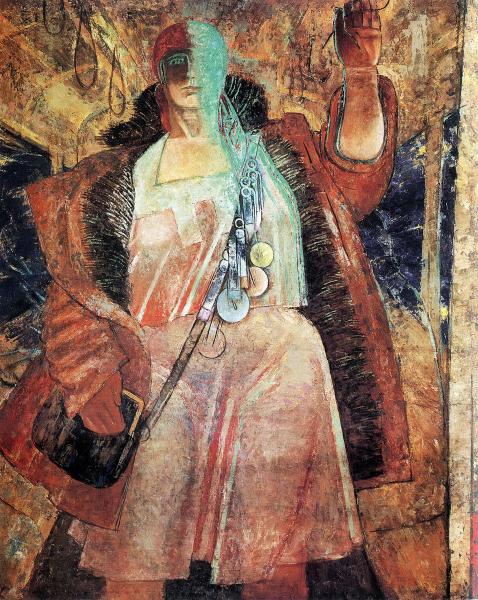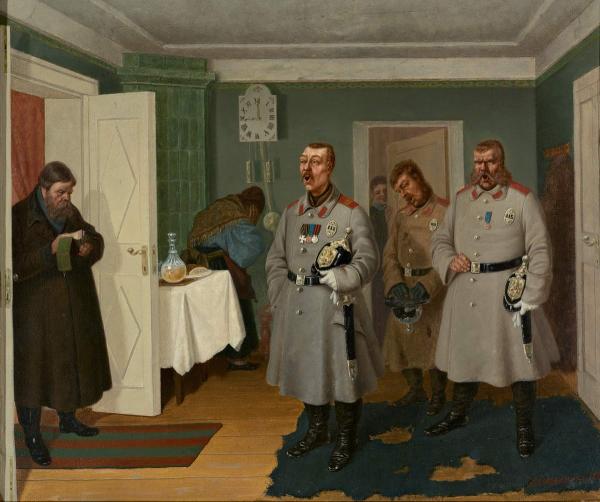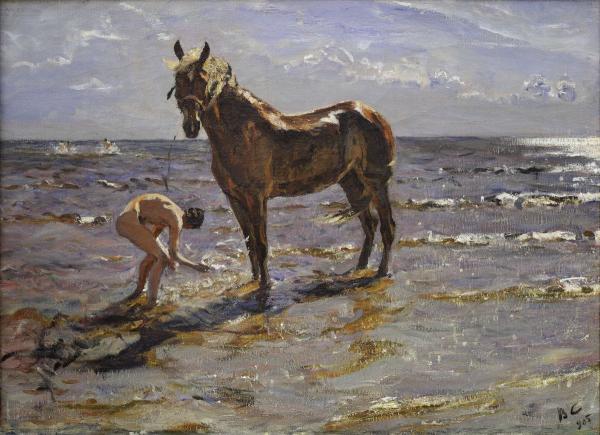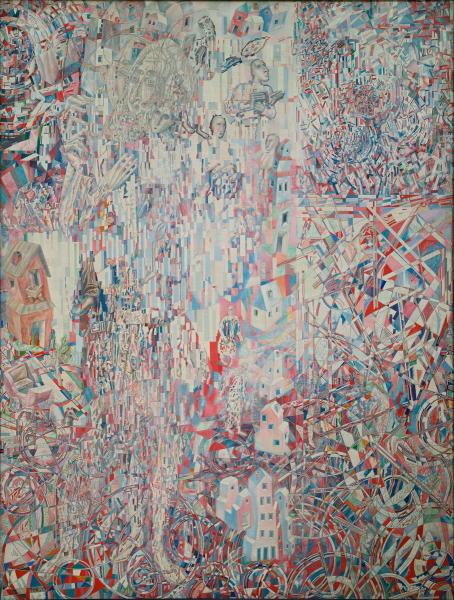The artist is self -wrapping

In the 1920s, Samokhvalov, like many artists of that time, was passionate about the search for characteristic phenomena of our time. The swiftness of changes was especially clearly seen in the images of women who mastered new social roles, new professions, style of behavior, clothes.
The conductor, the heroine of the picture shown in 1928 at the exhibition of the Association "Circle of Artists", is not just a woman selling tickets and watching the order in the tram. She seems to Samokhvalov a new goddess, the lord of electricity. And although the author himself made a plastic solution of the image from the Byzantine iconography of the Mother of God, who appears in ancient images in full height with his hands raised and spread to the sides, his conductor is more like a pagan idol. The proportions of her colossal figure go back to the images of archaic stone women. She prevails in a futuristic dynamic space with a roar of tram rushing along the rails. Half of the face is illuminated by the green-blue light of an electric flash, and this radiance spreads over her mighty chest, responding in the outlines of an open palm. The conductor with her blind gaze and the raised hand of Nemesis is the image of the entailing and punishing power.
Explaining the essence of the work, Samokhvalov emphasized that he wanted to force the viewer to feel how a simple worker, gesturing the move, controls the formidable and terrible force-electricity, in the past, only yawn-ghromovets and Ilya-prophet. “If Athena fell towards her in her chariot, he would not be surprised by the conductor, but Athena. So I thought then. It seemed to me clear. The pathos of the “conductor” remains the pathos of that era, ”the artist commented on his work.
Painting "Conductress" was created by the artist during the heyday of his creative talent. Among the works of Samokhvalov created in the 1920s., "Conductress" It is distinguished by the severity of plastic solutions, increased expression of color combinations and at the same time emphasized majestic intonation. Based on the scene accidentally captured in his memory and preserving in the narrative system of the work separate genre details, Self -praise seeks to exalt the image to the meaning of the symbol of the era, to use the language of monumental painting. The picture is written by the temporum imitating the texture of the fresco in a planar manner, where only individual parts of the image acquire volume. At this time, starting from the achievements of his teacher Petrov-Vodkin, Samokhvalov is looking for his own forms of generalization. AT "Conductor" The fascination of the ancient Russian fresco, which the artist studied during trips to Novgorod in 1925 was most frankly manifested. and in the old Ladoga in 1926-1928.


